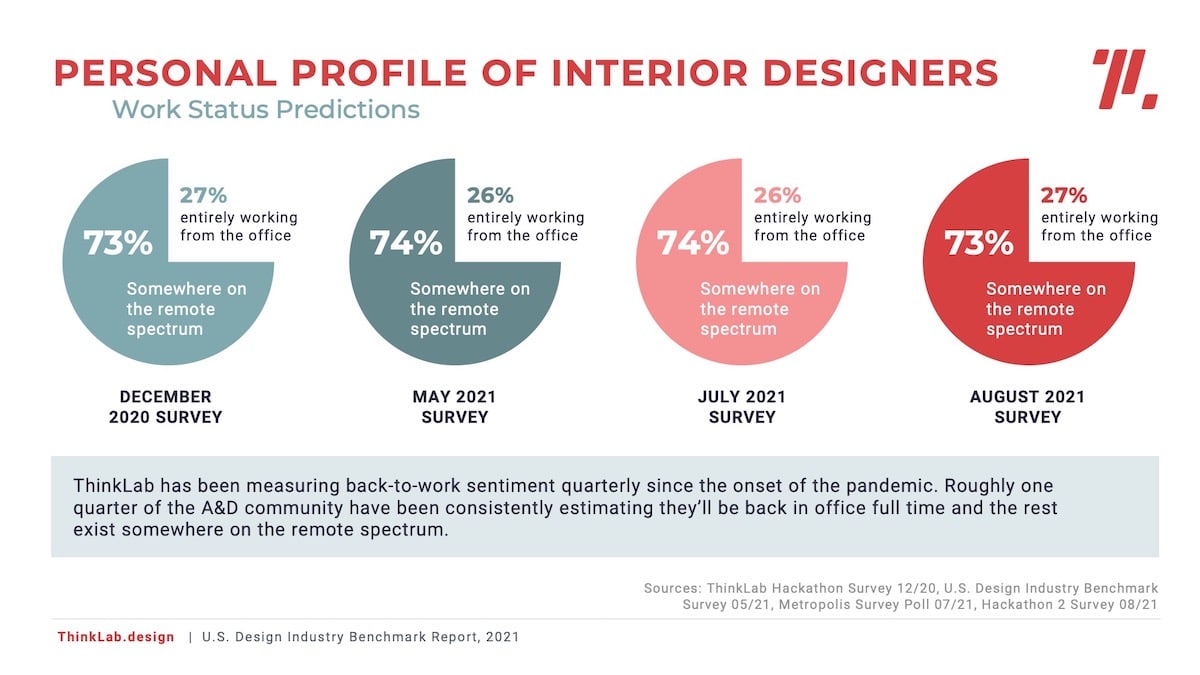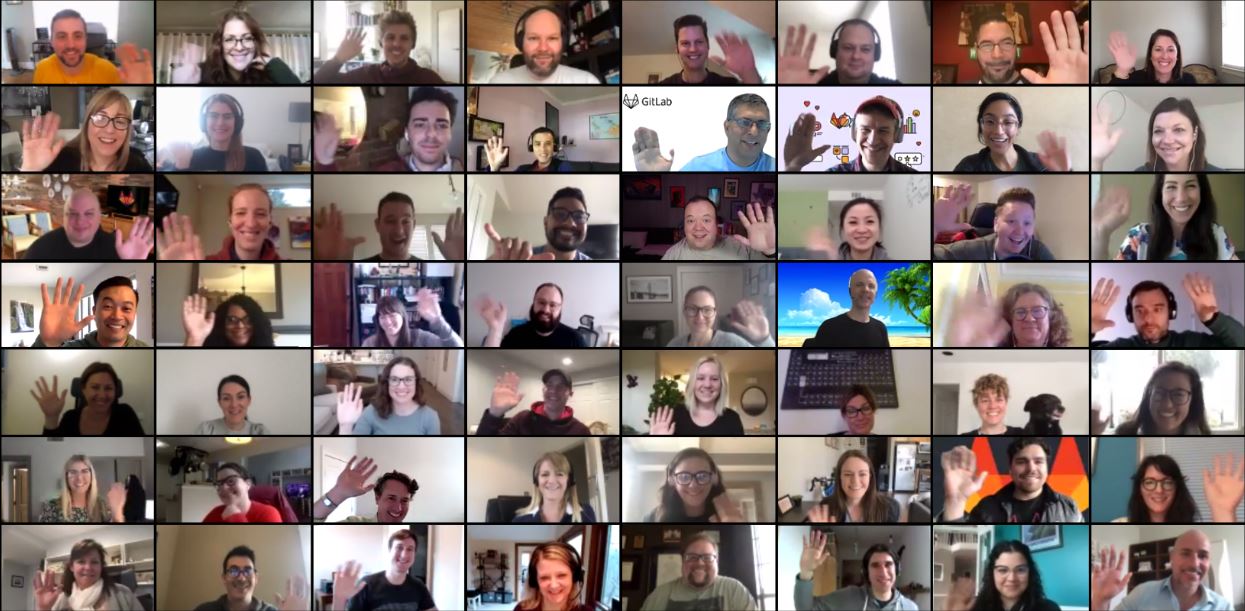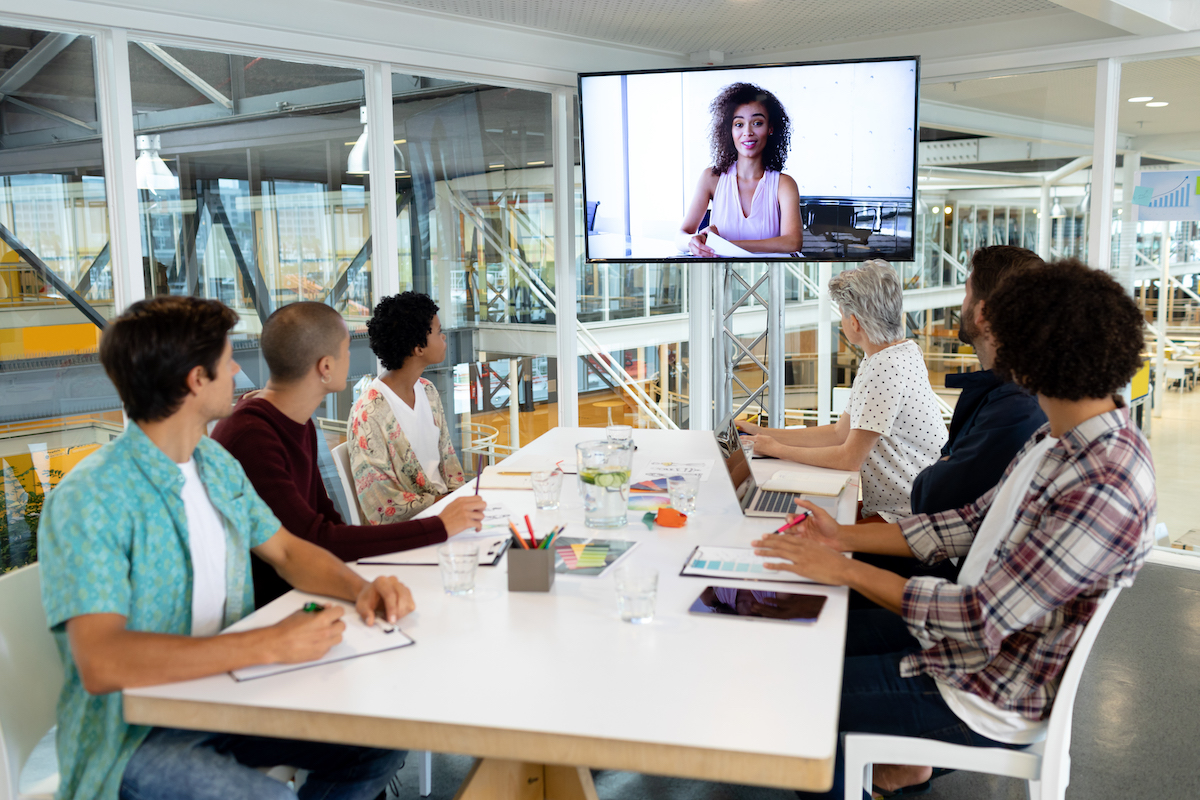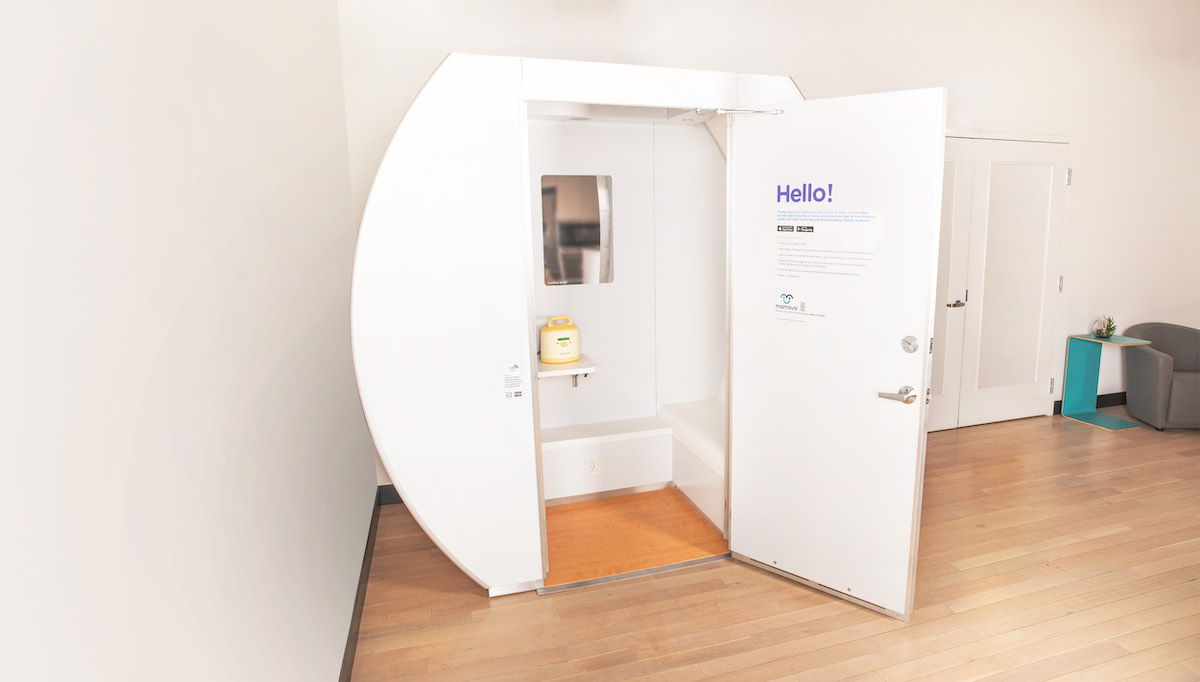
If you’ve been following ThinkLab lately, you know we believe that hybrid work is here to stay.
According to Kate Lister, president of Global Workplace Analytics, 56 percent of the U.S. workforce has a job that is compatible (at least partially) with working remotely. Her prediction is that 25–30 percent of the U.S. workforce will be working from home one or more days a week after the pandemic.
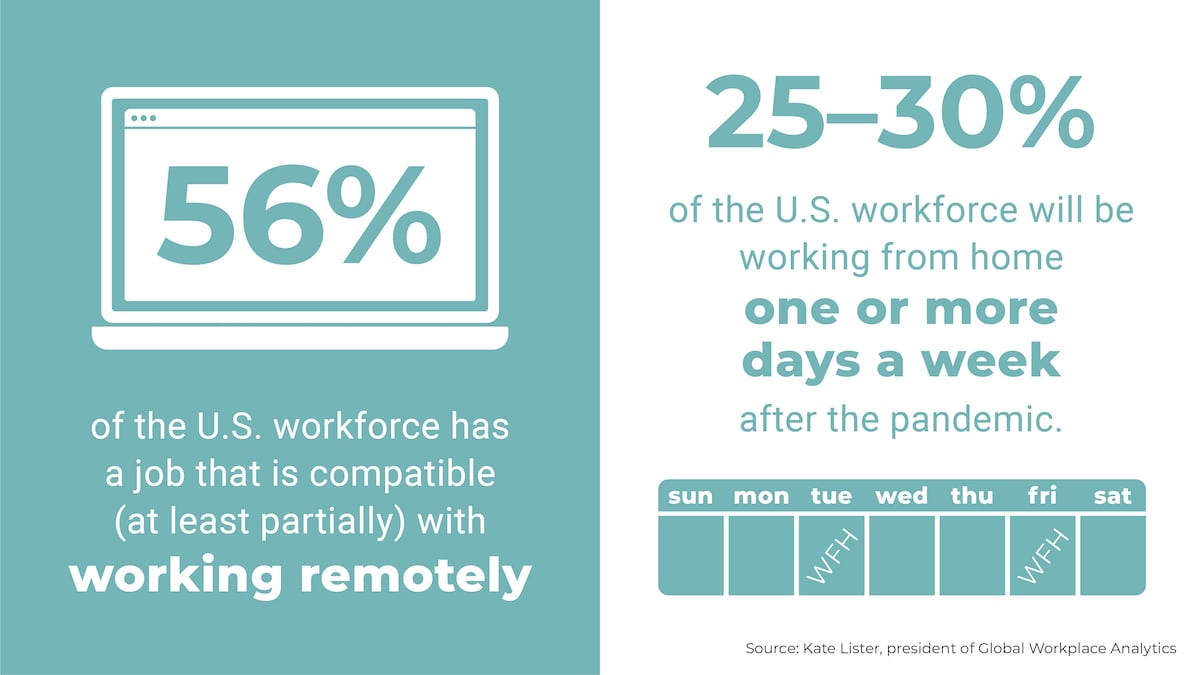
The architecture and design industry has a much larger percentage of knowledge worker jobs, and thus more potential for the adoption of remote-work arrangements. ThinkLab data suggests that three in four A&D firms plan to retain policies that allow remote work. These numbers have been steady since December 2020.
The nature of this change has been a matter of debate. Some believe that tech companies are pushing a perception of strong support on the side of remote work, while others believe commercial real estate companies are downplaying the shift — the truth remains to be seen.
According to JLL, although 72 percent of survey participants want to continue working from home at least two days a week, 74 percent want the option to come into an office. We believe hybrid work is here to stay, but let’s be clear: that does not mean the death of the office.
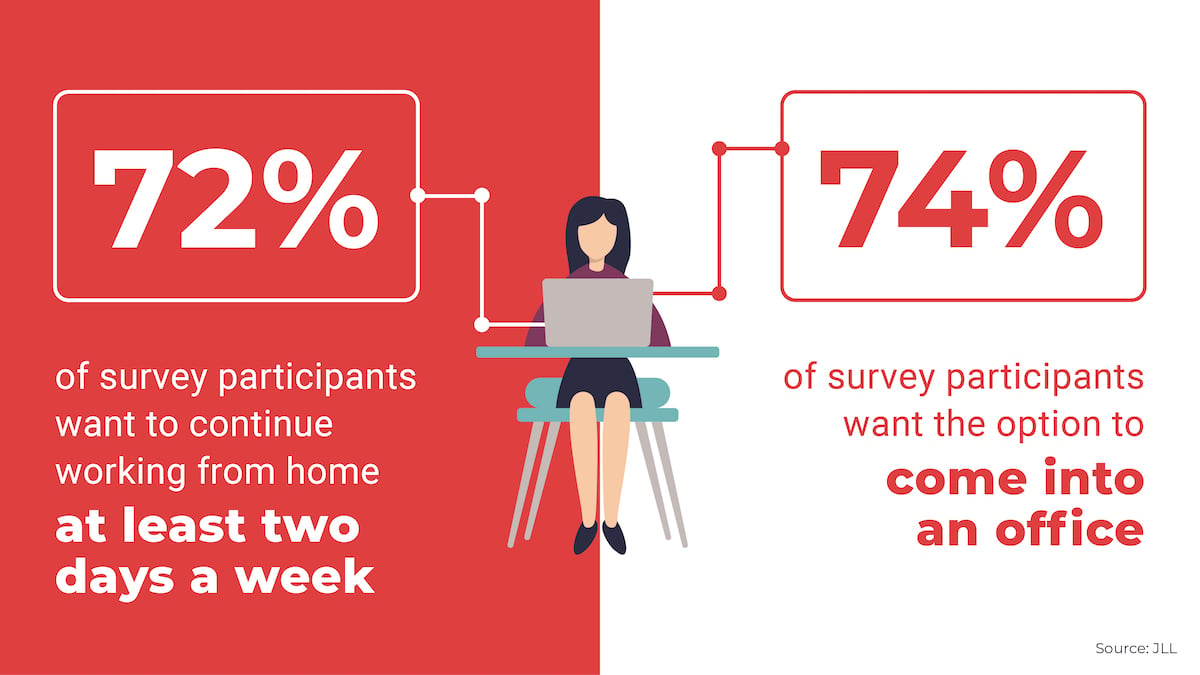
Ironically, expanding hybrid work and granting more personal flexibility will put even greater pressure on physical space to adapt to our needs. And that means a pressing need for better design, innovative products, and (more than ever) creative thinking.
So, to spark your own creative thinking, here are 3 tips to thrive in the new hybrid era:
1. Leverage digital to prioritize physical.
As we learn new social norms and develop new technologies for digital collaboration, face-to-face (F2F) interactions will remain the most effective way to build human relationships. Leverage creative digital strategies to make the most of these interactions. Here’s how:
-
-
Leverage remote tools to gather information and insights in advance so as to enhance and personalize F2F sessions.
-
Leverage digital tools to expand the reach of F2F interactions (when appropriate) to others who cannot be present; create hybrid equity.
-
Leverage technology to extend the life of the F2F interaction. This may mean encouraging interaction IRL (that’s millennial-speak for “in real life”); measuring those reactions; and then creating a document, video, or other way to record those positive moments for later.
-
For more creative sparks like this for your business, we invite you to check out our recent Hackathon Playbook here. Or, better yet, be on the leading edge by joining our next hackathon here.
2. Reestablish routines.
We have had hundreds of years to develop social norms around the physical office, working hours, and societal habits (like the commute), but this full-on hybrid world is still new. And, as we learned in a recent ThinkLab podcast, hybrid is the hardest.
We have to be prepared (and humble enough) to have the tough, and perhaps sometimes awkward, discussions with our teams, our bosses, and — most importantly — our clients to figure out what works for each company, project, and individual. Better yet, we can be the catalyst to help them figure out how to thrive within the physical environment and beyond, using strategies our industry has been discussing for decades, such as more movement throughout the day, how to create collaborative spaces when teams are on-site, and building digital equity.
Whether you are an individual looking to adapt your own practices, a manager looking to help your team run more effectively, or a business owner with a value proposition for your clients in this hybrid era, we want to remind you of the basics when it comes to remote work. If the foundations aren’t right, physical space won’t fix it.
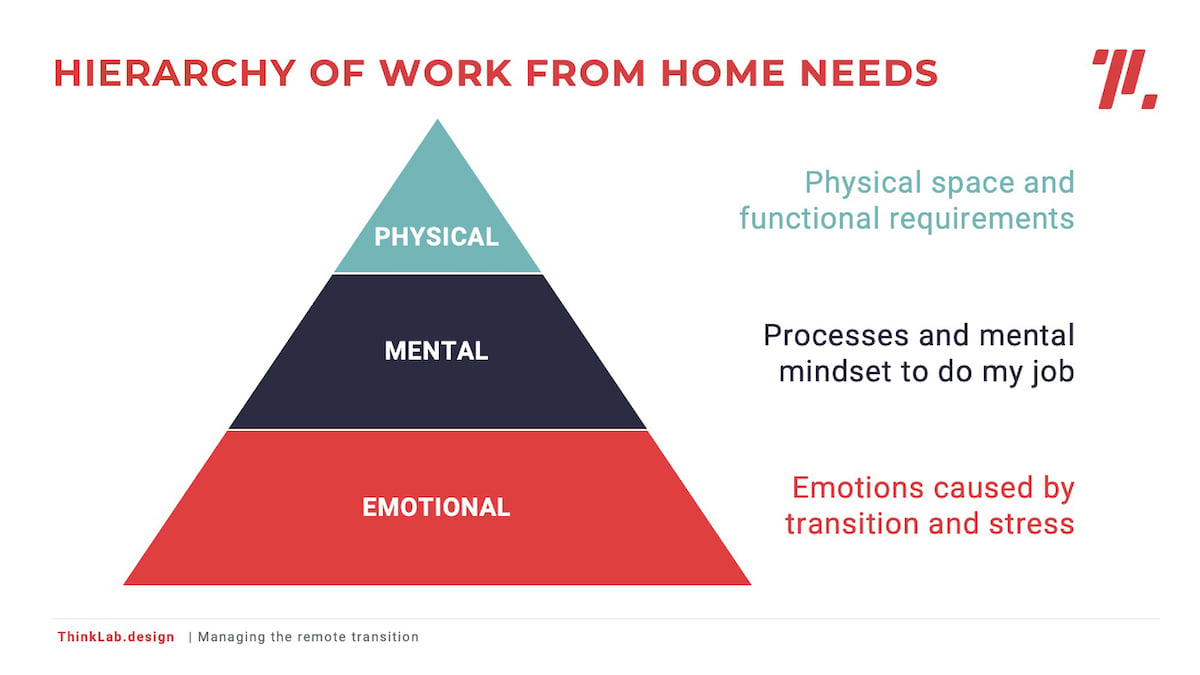
Physical space is only part (albeit an important part) of the equation. We must support ourselves, our coworkers, and our clients as we all adjust. This may require more time, patience, and what we call a “beta-test mindset” focused on being open to new ideas.
3. Look for opportunities for positive disruption.
(We define positive disruption as disruption that you are on the “right side of.” Learn more here.)
We all instinctively know that after periods of chaos and upheaval, our constituents emerge more open than ever to new ideas. And I am sure many agree, we’ve had enough chaos over the past 21 months to last a lifetime.
In many ways, however, the pandemic has only accelerated change that was already happening. This gives us an incredible opportunity to “return” to a world that is better than existed in 2019.
According to Adam Grant, author of Think Again, doing so requires a fundamental shift in mindset:
“Intelligence is traditionally viewed as the ability to think and learn. Yet in a turbulent world, there’s another set of cognitive skills that might matter more: the ability to rethink and unlearn.” He challenges us to look at our defined norms: “people often become attached to best practices. The risk is that once we’ve declared a routine the best, it becomes frozen in time.”
So, we argue that even some of the things “we can’t wait to return to” could be improved, and ThinkLab’s goal is to keep you constantly updated on the leading indicators of where our world is headed.
Dr. Daniel Susskind, speaker at ThinkLab’s 2021 Hackathon event, challenges the design industry very specifically on how technology will affect our world. He says, “I think the story is one of mass redeployment, a change in the sorts of roles that people have to perform and a change in the sorts of skills and capabilities that will be required to do those roles effectively. . . The problems [our profession] solve aren’t going away, but technology is transforming the way in which we solve those problems.”
We encourage you to deeply consider this hybrid era, and how we can shift our mindsets from “return to normal” to “return to better.”
Amanda Schneider is President of ThinkLab, the research division of SANDOW Design Group. At ThinkLab, we combine incredible reach to the architecture and design community through brands like Interior Design Media, Metropolis, Luxe, and Material Bank with proven market research techniques to uncover relevant trends and opportunities for the design industry.
